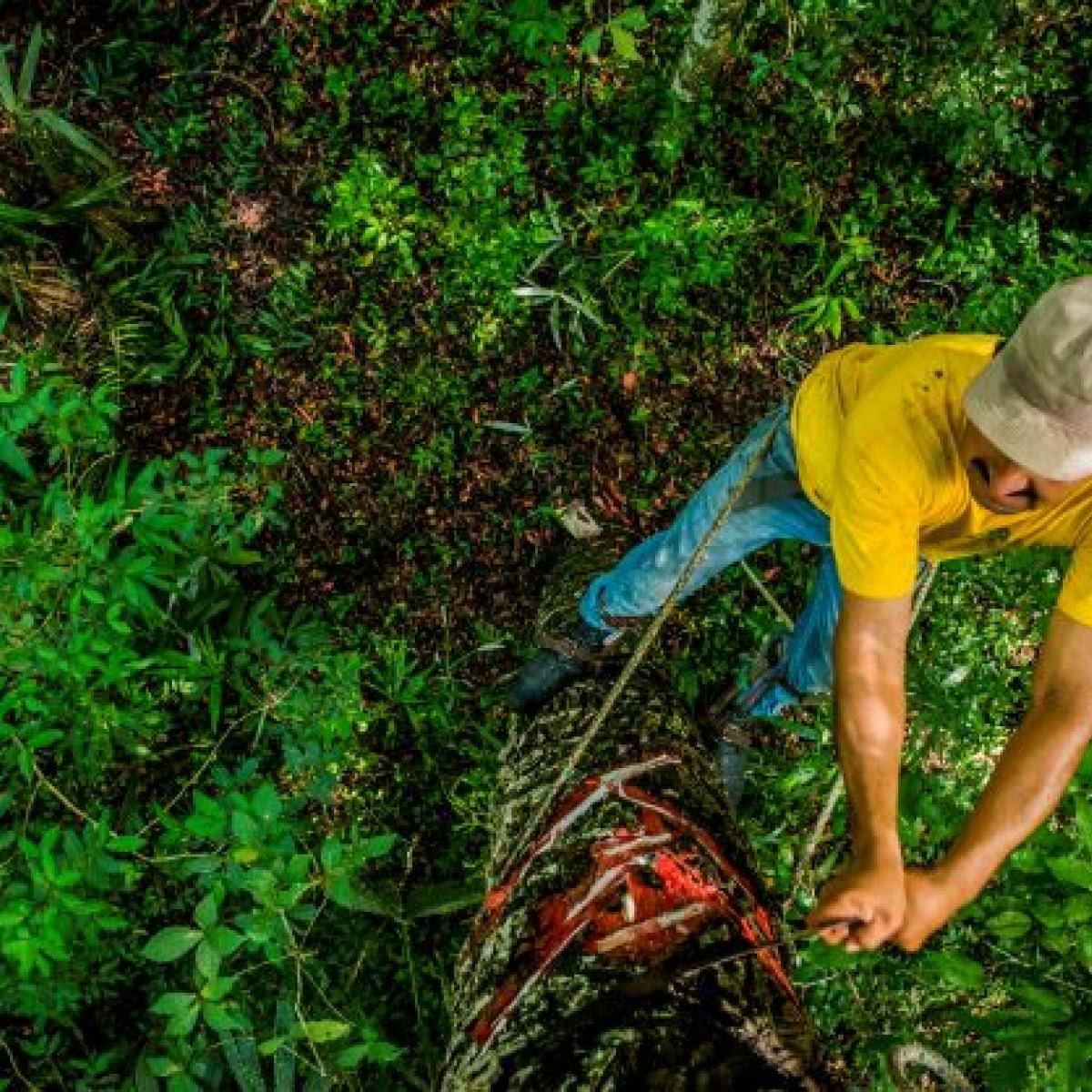Promoting Biodiversity
4 ways that USAID Guatemala partners with the communities that live– and work—in sensitive environments to protect and sustainably manage them.
Guatemala is one of the most biologically diverse nations on the planet, boasting 14 different ecoregions and over 15 thousand square miles of subtropical forest, 70 percent of which are located within natural protected areas.
USAID environment activities conserve Guatemala’s iconic biodiversity, reduce land-based emissions, enhance national and regional security, and contribute to income generation and employment.
Through these efforts, USAID has increased incomes and generated lasting employment, and engaged local communities in conservation initiatives. Concurrent biological monitoring has also brought iconic species back from the brink of extinction.
Read 4 ways USAID partners with the communities that live– and work– in the country to protect and sustain its unique biodiversity.
Mayan Biosphere Reserve
Located along the Guatemala-Mexico border, the Maya Biosphere Reserve is at the heart of the Selva Maya—Latin America’s largest tropical forest north of the Amazon.
Since 2014, USAID has been instrumental in supporting economic activities to conserve the rich biodiversity of this area by partnering with communities who rely on them.

USAID GUATEMALA

USAID Guatemala
Between 2013-2021, USAID has created more than 25,000 permanent and seasonal jobs, generated over $55 million in sales of products and services, and invested up to 30% of profits into local schools, rural infrastructure, healthcare, and scholarships—all while reporting a net-zero deforestation rate.
Climate-Smart Agricultural Practices
In Guatemala, ecosystems are threatened by wasteful agricultural practices that sap groundwater even as harmful fertilizers and pesticides pollute it.

USAID Guatemala
USAID Guatemala supports activities to alleviate these pressures on water resources through climate-smart agricultural practices and new agricultural technologies, like using higher yield plant varieties, delivering fertilizers through irrigation systems, promoting the implementation of water reservoirs and green houses, and incorporating integrated pest management.
This has increased productivity and income for over 36,800 producers, while also reducing the use of harmful chemicals by 50 percent. Thanks to these climate-smart agricultural practices, Guatemalan families are eating healthier produce, producers are increasing incomes, and the environment is being protected in over 20,920 hectares.

USAID Guatemala
Coffee
After coffee is fermented, the beans need to be dried. Producers often power their coffee dryers with fossil fuels or wood. Not only are the emissions from this method harmful for the environment, but the large amount of wood needed increases deforestation. USAID Guatemala promotes the use of renewable energy by replacing these dryers with energy efficient solar tunnels to dry coffee in Guatemala.

USAID Guatemala
Solar tunnels are beneficial to the environment — and they also increase the quality of coffee, because the volatile flavors of the beans are not altered from the fossil fuel emissions. This creates coffee of a higher quality and more balanced flavor. By using solar energy in the processing of coffee beans, producers save money and produce higher quality coffee, resulting in higher prices for their product.
Since 2021, USAID Guatemala has installed 145 solar coffee dryers — and partnered with more than 500 smallholder coffee farmers from 36 coffee-coops — in order to increase economic growth and mitigate the harmful effect to the environment.

USAID Guatemala
Local Solutions to Protect Biodiversity
High incidences of poverty and malnutrition combined with climate crises have led farmers and rural communities to overuse natural resources in order to survive. To alleviate this overuse, USAID Guatemala partners with communities, the private sector, and the Government of Guatemala to promote biodiversity conservation.

USAID Guatemala
By promoting sustainable and climate friendly economic activities — like community-led tourism and the sustainable use of forest products — more than 2000 Guatemalans who live in these regions are contributing to the preservation of Guatemala’s biodiversity. This work has resulted in the sustainable management of over 1800 square miles of forest, a reduction of deforestation of critical habitat, and an increase of incomes, improving the livelihoods of these communities.
By promoting sustainable and climate friendly economic activities — like community-led tourism and the sustainable use of forest products — more than 2000 Guatemalans who live in these regions are contributing to the preservation of Guatemala’s biodiversity. This work has resulted in the sustainable management of over 1800 square miles of forest, a reduction of deforestation of critical habitat, and an increase of incomes, improving the livelihoods of these communities.

USAID Guatemala
Credits:
CNCG Climate, Nature, and Communities In Guatemala / FTF PRO-INNOVA / FTF Coffee Value Chains







